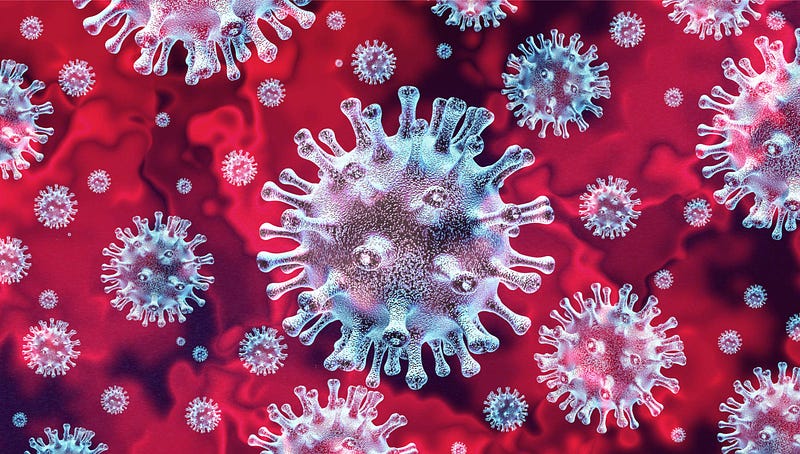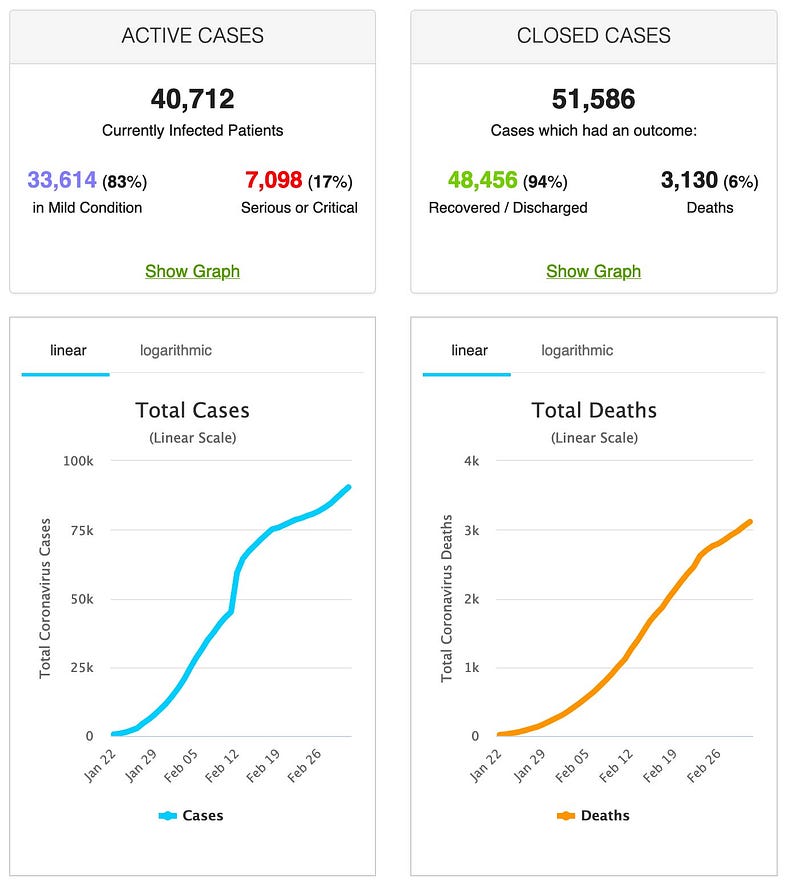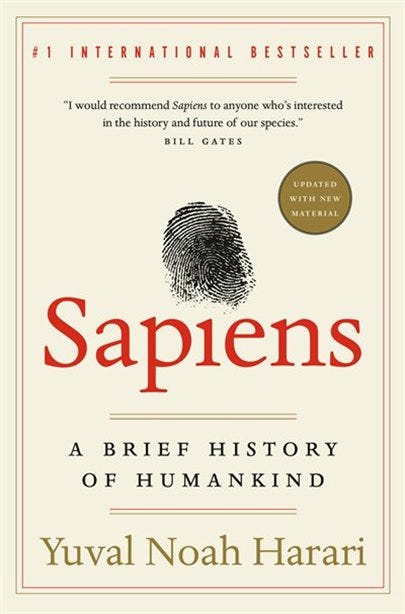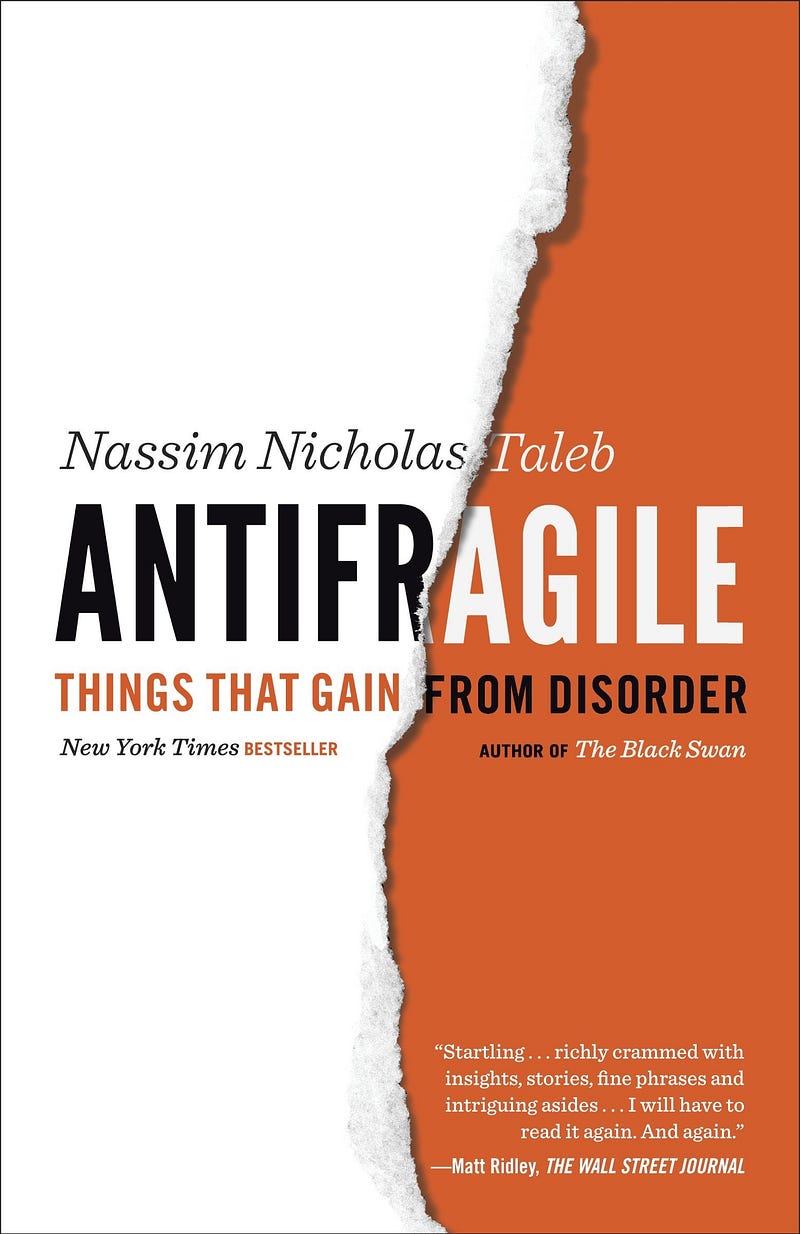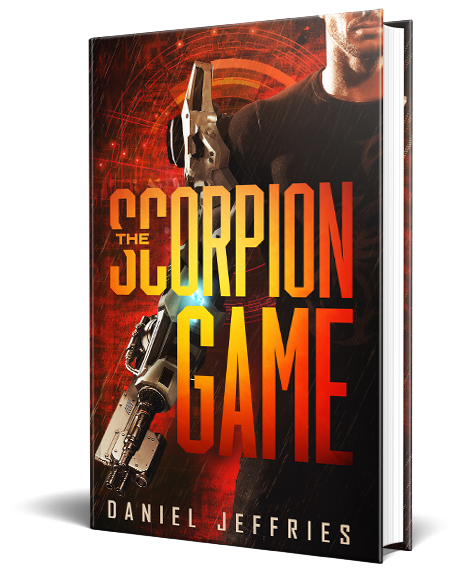Hope is a precious commodity.
It’s fragile and easily broken.
As the new coronavirus ripples across the globe, it’s trailed by terrifying predictions of our doom, fear of overwhelmed hospitals and critical services and the death of our global supply chain.
But what if there’s a different possibility?
What if instead of proving our highly connected world is fatally flawed, it proves a lot more anti-fragile than we ever imagined?
What if open science and the rapid spread of information in the science community saves us rather than dooms us and leads to a vaccine getting synthesized in record time? What if our hyper-interconnectedness is our great strength and not our great weakness?
Of course, this is the kind of article that may make me look utterly foolish in the coming weeks, months and years. But I’m not afraid to look foolish. I’ve been wrong before and I’ll be wrong again. I’ll take this risk because I think it’s worth the thought experiment. It’s worth considering the other possibilities and not defaulting to the worst case scenario the second anything goes wrong in life.
Let’s be clear: We’re at a tipping point.
The virus could still go exponential and devastate the world in ways we’re only beginning to understand. Right now the virus is testing us all. In the branching paths of the future it can go either way.
But I see a lot of reasons for hope in the white noise of fear.
To start with, look at our global information supply chain. People are quick to point out how fast misinformation is spreading in the age of social media as wild distortions of the truth mutate more rapidly than bacteria on Twitter, Facebook and encrypted messengers.
But I see two streams of information, two global collective voices jostling for position.
The rational, sane, well thought out stream of people trying to spread the best and most up-to-date information and the competing voices of paranoia and fear who forward baseless rumors like the virus is mutating rapidly (no credible evidence to support that because this isn’t a sci-fi movie where viruses mutate overnight, though it could happen in time) or that it’s a bio-weapon released to kill us all (see Occam’s Razor and the fact that we have pinpoint precision smart weapons that kill precisely rather than randomly.)
At this point it’s not clear which information stream will rule the day in the long run.
Still there’s much to hope for if you look closely.
Never in the past have we had such rapid access to up-to-the-second information about how to protect ourselves.
We know to wash our hands, and keep our distance, and that it probably doesn’t spread except via droplets, but that it can live outside the body on surfaces for hours or days depending on the surface type.
We can watch stats flow in every day. It’s a goldmine of information, right in the palm of your hands, delivered to you on a smart phone built on the back of an incredibly amazing and intricate global supply chain. Apple works with 43 suppliers across six continents to make the iPhone. Deconstruct that supply chain further into mining and sourcing and it touches nearly every economy on Earth, weaving it all together into a magical device that you can spread panic or smart information on with the swipe of a finger.
In past pandemics, even as recently as SARS, a mere decade ago, we never had access to that kind of information.
During the most devastating pandemic of all time, the Black Death, you didn’t have any way to figure out what was going on and there wasn’t a doctor that could help you with even the most basic supportive care. In today’s incredible climate of rapid medical advances doctors have actual ways to fight the disease, even without a cure. They can use breathing machines and drips of vitamins and antibacterial solutions that help your immune system fight back and recover.
In the past doctors had nothing but prayers and a scary bird like mask to offer you.
I’m re-reading the incredible middle age masterpiece, The Decameron, about a group of young people spinning a hundred bawdy tales of fun, sex and misadventures during the time of the Black Death. It starts off with a strong description of the purple and black sores that signaled the onslaught of the sickness. But as was typical of a time of low grade information exchange it spins into fantasy and nonsense quick. The author swears by God and his own life that he saw animals sniff the remains of the dead and then fall down twitching, only to die seconds later. There is no disease on Earth that moves that fast. There are poisons that move that quickly but that’s about it.
When you have no information at all, fantasy and fear take root and you begin to believe your darkest fantasies.
That brings us to the global supply chain. I won’t pull any punches here. That’s probably the weakest point in all of this chaos. The supply chain is already under pressure from trade wars and a stock market that’s wildly over-exuberant and COVID-19 could tip it over the cliff.
A friend of mine has a successful business selling LED dog collars on Amazon and he describes it perfectly:
He hasn’t gotten a shipment from China in a month since China basically shut down the country to deal with the outbreak.
He could move manufacturing to the United States but where would he get the parts from? Probably from China because few other places are ready to make LEDs right now. Of course, even if his suppliers get back to work, that doesn’t mean they can deal with the backlog of requests or get all the parts they need to make the dog collar.
What if they can’t get a leather strap or a screw? The whole thing falls apart and he has no collars to sell.
In no time he is laying people off and losing market share on Amazon as other suppliers with inventory rocket to the top of the listings in brutal economic Darwinism.
Many folks cheer the death of the global supply chain, imagining happy workers building everything we need right at home but that’s just a comforting fantasy.
American pharmaceutical companies have created many of the most important medicines on the planet but manufacturing them depends on other countries. Up to 80% of the ingredients come from India and China. Unless you happen to have those ingredients in your own mines (you probably don’t) and growing in your own forests (probably not) you can’t make those drugs without the help of other people and places.
We’d like to think we can roll back the clock and make everything right in our backyard the way our forefathers did but it won’t work. You can create a battery factory in your own country but if you can’t mine Lithium at home it doesn’t matter all that much. Most of the world’s Lithium comes from Bolivia, Argentina and Chile. Lithium will not suddenly appear in the south of France or the hinterlands of Germany or the sweeping plains of Kansas just because we want it to appear.
But for all the fear about the global supply chain, there is a lot of resilience in it as well, especially where the same things can come from different places on the planet.
We can grow avocados in lots of different countries and if one country struggles to contain the virus other countries at least have a chance to pick up the slack. That’s a vastly different proposition from old world economies where a blight or pestilence on local crops meant everyone starved. The amazing book Sapiens talks about how ancient kingdoms often kept granary stocks but it did very little to stave off starvation and local governments regularly stood by while their populations starved to death, utterly powerless to stop it.
The word quarantine comes to us from Italy, one of the countries hit hardest by the epidemic. It derives from the words “quaranta giorini” which means 40 days. That was the time ships were required to dock at port to prove they didn’t have Plague, aka the Black Death. Back then most food just rotted on those ships and the people waiting for it starved.
In other words, in the past you just died because the food supply was almost 100% perishable and there was no way to survive a quarantine while you waited.
Today, you can count yourself lucky that you even have the option to be a prepper because of modern technology and the global supply chain.
You can buy canned Tuna and mayo to your heart’s content, all of which got packed on some distant shore, without you ever having to learn to fish or charter a boat into turbulent and dangerous waters. Go ahead and stock up on soup, pasta and rice and you can live for months without ever leaving your house even if the lights go out. Get a Berkey water filter, which needs no power, and you can filter our 99.99% of just about anything that could kill you or hurt you.
Beyond the risks to the global supply chain there are many bright spots of hope when we look at the speed of modern construction and the rise of open science.
If you haven’t been to China you should go (after this all dies down, of course.) I went five years ago when I was researching and writing an epic Chinese civil war saga and I found the rapid construction boom utterly stunning. The incredible architecture, sprawling megacities, soaring buildings filled with dazzling light and the scale of gigantic bridges absolutely blew my mind. If you’re a westerner you might still labor under the ridiculous delusion that China is a backwards and underdeveloped country when it is one of the most widely developed and modern in the entire world.
Here’s a video of China building a hospital in ten days with time lapse photography to combat the virus. Ten days. Let that sink in. Humans could not build something that complex, that fast, even a few decades back. We have the capacity to move faster than the virus in ways that looked like sci-fi not long ago.
Science is moving faster than ever before too. Chinese scientists synthesized the genome of COVID-19 and distributed it all over the world in days so it could be scrutinized by the brightest minds everywhere.
Remember that it took the Human Genome Project over a decade and 5 billion dollars to synthesize the human genome as recently as 2003.
Now we can sequence your genes for $200 dollars in 48 hours.
Already, modern tech is changing how we create medicines and fight this disease. It used to take scientists years to comb through existing drugs to find out if they had a chance of also killing off a new pathogen.
Now deep learning and other machine learning techniques are helping identify those drug candidates faster than we ever dreamed possible.
We’re talking about drugs that could combat the virus being ready in months, not years or decades. That’s never happened in human history. Instead of AI taking over the world, it’s helping us scale and do things faster and more efficiently, working with us as centaurs. Centaurs are AIs working in concert with humans to augment their abilities and make them faster, smarter and more scalable. The power of AI will only increase in the coming decades as we find more ways to use AI for Good.
Branching Pathways in the Days of Future Past
Nobody can truly see the future.
But we can do a kind of Monte Carlo analysis of the future, where we take a step back and look at thousands of branching possibilities trying to see through the white noise to spot a real signal about where things are going.
We can see the strongest branches of tomorrow forming and try to push towards those positive pathways with every resource we have available to us.
I can’t promise this virus won’t seriously damage our global supply chain or spread faster than we can contain it. It’s already hit 60 countries and it’s not slowing down yet. But I don’t agree that all is lost. The very things we worry about as our greatest weaknesses may prove to be our greatest assets.
Maybe the virus will even do more damage than the flu? While the world panics about COVID-19, the flu quietly killed somewhere between 18,000 to 45,000 people last year alone. That probably surprises you because you’ve likely had the flu multiple times and survived but a lot of people didn’t survive. People like to quickly point out that the mortality rate of the flu is a lot lower than the novel coronavirus. That’s very true but it highlights some interesting things about viruses and statistics.
Viruses with higher mortality rates are often much less successful then viruses with lower ones.
Why?
Because a lower or slower death rate lets the virus fly under the radar.
Humans are fantastic a spotting big, flashy, immediate threats. We can spot a snake faster than any other animal. It’s hard wired into our brains because snakes killed so many of our ancestors. We spent a few million years running around in the forest, hunting and gathering, facing sudden death from animals and disease. We got good at spotting the quick deaths all around us.
Because the flu kills less people it can spread farther and faster. The flu infected 32 to 45 million people last year.
That’s the very definition of a successful virus.
By killing less of its hosts it can replicate much more widely and stealthily. It’s lower mortality rate lets it fly under the radar of people’s highly tuned immediate threat instincts.
The novel coronavirus has a high enough mortality rate to get people up in arms. China shut down almost the entire country in a nearly unprecedented mobilization of might and authoritarian power. They might have just saved us all because they limited how fast it got out and they alerted the world to the threat. Other countries are mobilizing.
Coming across human’s radar may be the very thing that causes the virus’ undoing while the flu continues to flourish and kill tens of thousands a year and nobody notices.
Only time will tell which path we take in the future.
In the meantime, buy a few canned supplies, wash your hands, stay in if you’re sick and spread only good and helpful information.
And maybe hope will prove anti-fragile after all.
###########################################
A bit about me: I’m an author, futurist, systems architect, pro-blogger, podcaster and public speaker. I’m also the Chief Technical Evangelist at Pachyderm, a flexible, open source, machine learning operations pipeline and data lineage platform.
###########################################
If you love my work please visit my Patreon page because that’s where I share special insights with all my fans.
Top Patrons get EXCLUSIVE ACCESS to so many things:
Early links to every article, podcast and private talk. You read it and hear first before anyone else!
A monthly virtual meet up and Q&A with me. Ask me anything and I’ll answer.
I also share everything I’m working on and give you a behind the scenes look at my process.
##########################################
If you’re passionate about artificial intelligence then come join the communities were we talk about how to build the AI stack of the future and how to make AI work for everyone.
Practical AI Ethics Foundation
###########################################
You can get a FREE copy of my first novel, The Scorpion Game, when you join my Readers Group. Readers have called it “the first serious competition to Neuromancer” and “Detective noir meets Johnny Mnemonic.”
##########################################
Lastly, you can join my private Facebook group, the Nanopunk Posthuman Assassins, where we discuss all things tech, sci-fi, fantasy and more.
###########################################
I proudly use affiliate links in my stories but only link to things I actually like and/or own or have owned in the past.
###########################################
